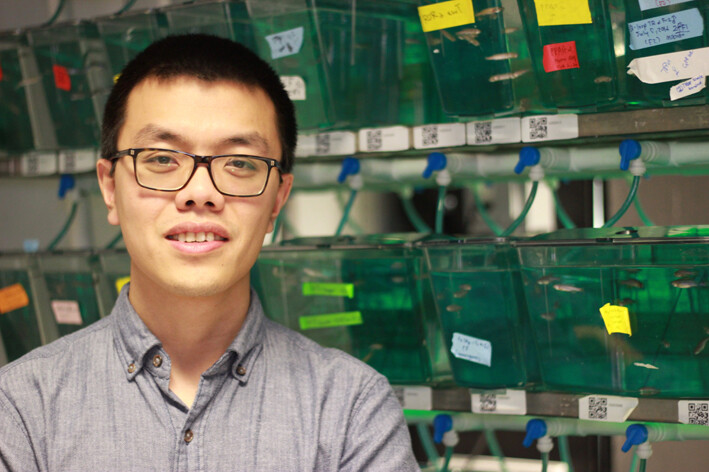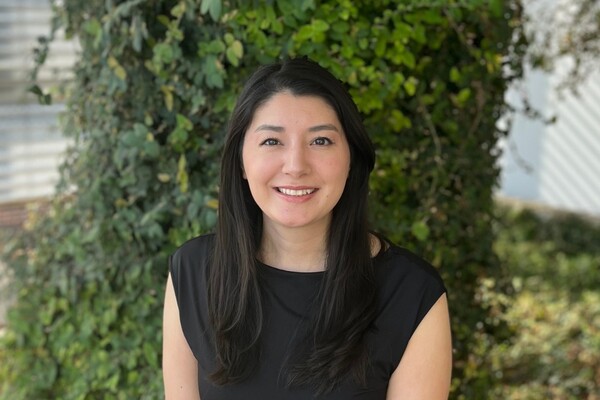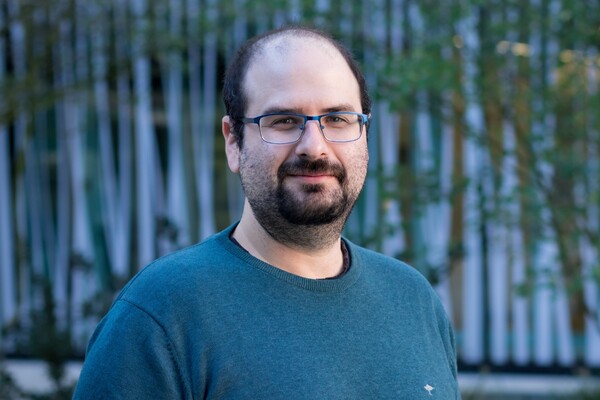Main Second Level Navigation
Meet Jiabao Liu, This Year’s Charles H. Best Fellow

Jiabao Liu likes a challenge. After graduating in pharmaceutical science with honours from Harbin University of Commerce, in north east China, Liu decided he wanted to get a PhD. But instead of casting a wide net by applying to several graduate schools, Liu applied to only one—Peking Union Medical College, the most prestigious of its kind in China. If he did not get in, he would have to wait another year to reapply, his family repeatedly pointed out to no avail. In the end, Liu fought off fierce competition and made history as the first student from his university to go to the nation’s top medical school.
Liu is this year’s winner of the Charles H. Best Postdoctoral Fellowship, awarded annually by the Charles H. Best Foundation to an exceptional postdoctoral researcher in the Donnelly Centre.
“It is a great honour for me to get the Best award. It will inspire me to continue discovering new and key molecules for life,” Liu said.
Eight years after graduating from university, Liu is facing a different kind of challenge. As a postdoctoral researcher in Professor Henry Krause’s lab, his goal is to shed light on molecules called nuclear receptors (NRs) which have been linked to a range of diseases, from hormonal and immune disorders to biological clock misregulation, obesity, diabetes and fatty liver disease. Despite their vital role in health, exploring NRs on a molecular level has been difficult because the right technology was lacking. But with skill and a little luck, Liu reckons he can now make headway.
In the two years since joining Krause’s lab, using the know-how acquired during graduate training in medicinal chemistry, Liu has vastly improved the method for isolating NRs from living tissue in order to study them in more detail.
“Jiabao came to my lab with a very sophisticated knowledge of drug like molecules, how they behave and how to isolate and identify them,” says Krause. “When put together with his incredible drive and intuition, he was able to develop powerful new methods that are now identifying exciting new hormones and potential drugs.”
Of the 48 human NRs, only about half have been studied in depth. This knowledge has already led to new treatments, such as tamoxifen for example, which acts on estrogen receptor to halt breast cancer. Cellular processes controlled by other, less well studies NRs open the door to finding new medicines for some of the most prevalent diseases of our time, such as diabetes and obesity.
"When put together with his incredible drive and intuition, Jiabao was able to develop powerful new methods that are now identifying exciting new hormones and potential drugs" - Professor Henry Krause
It’s only fitting that the Best fellowship was awarded to a researcher following in the steps of Charles Best whose co-discovery of insulin with Frederick Banting in Toronto, in 1921, saved millions of lives of people suffering from childhood diabetes, in which the body does not produce insulin. Almost a century later, however, cases of insulin resistance—as in type 2 diabetes in which the body fails to normally respond to insulin—continue to soar due to unhealthy lifestyle, which calls for new medications.
Like all molecular receptors, NRs directly receive and transmit signals telling cells to alter gene expression in order to grow, divide or change their physiology in any way. But unlike the majority of receptors, which are found on cell surface and rely on molecular middlemen to pass on the signal to the cell’s interior, NRs reside inside cells, in the vicinity of the DNA. This means that they can quickly latch on to DNA to turn genes on or off as needed.
Liu’s goal is to isolate molecules that bind and activate NRs linked to metabolic disorders, such as insulin resistance, and which could give clues to how these NRs can be targeted by drugs. This type of research is usually done in cultured human cells, which often yields flawed data because cells grown in plastic dishes do not replicate normal body physiology.
To overcome this hurdle, Liu has tuned to zebrafish. The staple aquarium pet is also a coveted research tool— it has a spine, and therefore a similar body plan and physiology as a human, but is at the same time a relatively simple animal and easy to work with in the lab. Previously, the Krause team genetically engineered zebrafish strains so that they express human NRs in their tissue. This allows Liu to use human NRs as bait in order to capture associated molecules in their intact physiological environment.
Despite the challenging project, science does not keep Liu awake at night. His eight-month-old son does. Being a postdoctoral father can be exhausting but Liu remains unfazed about the prospect of his research. “I just don’t have free time anymore, and new NR biology is waiting to be discovered” he says, eager to get back to work.
We thank The Charles H. Best Foundation for their continued support for this award.
News



